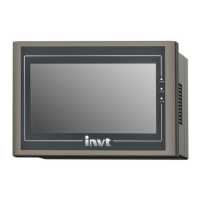VS070QS-1618MDM1 Integrated Machine Temperature autotuning PID
202403 (V1.0) 40
TPID command control modes include: default manual PID control mode, slow
autotuning PID control mode, manual PID control mode, ON/OFF control mode,
and fast autotuning PID control mode.
Default manual PID control mode: It is the default mode of the command, in
which a set of default PID initial parameters are given internally, and you just
need to set the target temperature, real-time temperature, temperature upper
and lower limits, and the control cycle time. The command will have a certain
degree of overshooting for the first temperature rise, and then the temperature
will be stabilized at the target temperature after a few minutes. The autotuning
time of the mode is relatively fast.
Slow autotuning TPID control mode: When you select this control mode, you
must set the following parameters.
A. Target temperature
B. Real-time temperature
C. Temperature upper and lower limits
D. Control cycle time
E. Sampling time and other parameters
F. Autotuning coefficient
After enabling the energy flow, the command auto-tunes a set of suitable
control parameters according to the control object in the heating process. After
the completion of the autotuning mode, the system outputs the autotuning
parameters, and automatically adjusts these parameters. The next time you
use the tuned parameters, you need to adjust to the manual mode and enter
the autotuning parameters for control. There will be a small temperature
overshoot, but the error will be within ± 1 ℃ after stabilization.
The first tuning needs to take relatively long time. The autotuning effect is the
best when it runs in room temperature environment, which is applicable to
scenarios with high temperature requirements. The autotuning sampling time
can be set to 200ms, and the control cycle can be set to 2000ms. In an example,
the autotuning coefficient is 5, the autotuning temperature is 60°C, and the
target temperature is 90°C. The curve is as follows.

